SPRING 2010
Spring 2010 / Louis D. Brandeis School of Law / University of Louisville
Donald Vish, lecturer
_____________________________________________
Course Description
This course will present insights into the nature of law and social justice through the prism of literature. Each class will explore timely and timeless topics arising out of the search for justice. How can Orestes extricate himself from the duty to avenge the murder of his father by killing his own mother? How shall Captain Vere punish Billy Budd’s reflexive act that results in the death of a superior officer aboard ship in wartime? How is Antigone to obey the religious law requiring her to bury her brother and the state’s decree that she may not? Justice is a pendulum that swings between the letter of the law and the spirit of equity. We shall plot the course of justice through the eyes of art and the imagination of storytellers. Poets and litterateurs are the unacknowledged legislators of the world. ____________________________________
Lecture #1: INTRODUCTION
[January 7, 2010]
_____________________________________________
Course Syllabus
Basis of grading: Either four papers written as book reviews for each of the four principal literary assignments will be 80% of the grade or one paper using each of the four principal works to define and describe the nature of justice in not less than 2500 words nor more than 4000. Class participation will be 20% of the final grade (discuss this with students.) Each paper should be less than 750 words and relate the story line or a character to the important legal principles you discern in the text. We are interested in the story line ONLY as it impacts law and justice issues. The paper is due at the beginning of the class at which the piece is to be discussed. Good reportage is a “C” and superb insight and analysis is an “A.” Class participation means responding when called on as well as gratuitous participation in class discussions and raising helpful and provocative questions and comments. Knowing the lesson will earn a “C” or “B” whereas participation distinguished by obvious analytical thought will earn an “A.” If you feel the class has concluded without affording an adequate opportunity for you to shine, you may email me your extended remarks within 24 hours of the class at donaldvish@middreut.com and they will be considered. A class ombudsman committee of three will be appointed to present any complaints, suggestions and requests that an individual student may not want to present personally to the lecturer.
Read the rest of this post . . . .
Facebook: A class Group Page has been created under the title: Law & Literature @ Louis D. Brandeis School of Law. Weekly assignments will be posted along with discussion opportunities.
Major Resource on line: LAW & HUMANITIES: a Bibliography of Law and Literature, Professor Daniel L. Solove, The George Washington University Law School (this is a tour de force, consult it before each class to see if there is anything that interests you or helps you with the assignment). http://docs.law.gwu.edu/facweb/dsolove/Law-Humanities/writers.htm
1. William Shakespeare, The Merchant of Venice (Oxford World's Classics: the Oxford Shakespeare) Jay L. Halio (Paperback - 2008) or see LEDWON pp. 63-65, 297-310 and POSNER pp. 65, 87-88, 103,110, 111, 123, 126, 143, 150, 189, 243, 321, 397. Also read the plot outline or story synopsis of Shakespeare’s Measure for Measure by POSNER pp. 114-121, 123-124, 126, 143, 150, 244, 398-399. Lecture # 4, January 28, 2010.
2. Aeschylus, The Orestia (Paperback) Agamemnon, The Libation Bearers and The Eumenides (525-456 B.C.E). (Penguin Classics) by Aeschylus, W. B. Stanford, and Robert Fagles (Paperback - Feb 7, 1984) and see POSNER 60-66, 83, 121-122 and also http://en.wikipedia.org/wiki/The_Oresteia Lecture # 7, February 18, 2010.
3. Herman Melville, Billy Budd, Sailor (An Inside Narrative) (1924) (Harrison Hayford & Merton Seals, eds. U. Chicago Press, 1962). Please use this edition and read the work in its entirety along with the essays, commentary and observations about the story. Lecture #10, March 25, 2010. In addition, see POSNER pp. 122,149-50, 162, 163, 165-173, 179, 181, 242.
4. Albert Camus, The Stranger (1942) [Student Guide, Landmarks of World Literature] by Patrick McCarthy, Paperback 2004. (Especially Part Two, the trial) or see POSNER pp. 40-48, 151, 162-164, 176-177, 223, 321. Lecture # 12, April 8, 2010.
5. Franz Kafka, The Trial [introduction by George Steiner] A. A. Knopf, Inc. Schocken Books, Inc. ISBN 0-8052-1040-7 or see POSNER pp. 129-140, 176, 184-185, 188, 192, 238, 240, 241 and LEDWON pp. 63-65, 255-256. Lecture # 15, April 29, 2010. [CANCELLED, classes end April 19, 2010].
Literary fragments, excerpts and the expository prose and poetry are identified in the assignments section of each lecture plan. If you have trouble finding the text online, please let me know by email. If you elect to write one paper you can begin right away and proceed during the semester at your own pace. If you elect to write five papers, one on each of the principal literary works, the paper is due at the beginning of the lecture at which the work will be considered.
The Study of Law and Literature
The law and literature movement focuses on the interdisciplinary connection between law and literature. This field has roots in two major developments in the intellectual history of law -- first, the growing doubt about whether law in isolation is a source of value and meaning, or whether it must be plugged into a large cultural or philosophical or social-science context to give it value and meaning; and, second, the growing focus on the mutability of meaning in all texts, whether literary or legal. Those who work in the field stress one or the other of two complementary perspectives: law in literature (understanding enduring issues as they are explored in great literary texts) and law as literature (understanding legal texts by reference to methods of literary interpretation, analysis, and critique). From Wikipedia http://en.wikipedia.org/wiki/Law_and_literature
Journals: Law and Literature
The Cardozo Studies in Law and Literature, a leading journal on the subject for many years, has changed its name and is now part of the University of California Press (access requires subscription): http://www.ucpressjournals.com/journal.asp?j=lal
Lawyers and Literature
Website created by James Elkins, Professor of Law, West Virginia University, for his course on lawyers and literature.
Assignments for Class #1:
1. Book of Genesis: 4:1-24 The Story of Cain and Abel: 9:6, the law as explained to Noah. Is the judge fair? Is the punishment just? What is the nature of the justice system in the story? Identify all of Cain’s crimes. Which is the most serious? What does it mean to be avenged sevenfold? Is Lamech a murderer? Is he punished or protected?
2. Psalm 19, 7-11. What are the elements of a good legal system according to Psalm 19? Where does the law originate? What is its source, its authority? Does the source of the law in Psalm 19 have anything in common with the United States Constitution or the Declaration of Independence? Does crime pay?
3. Dante, The Divine Comedy Canto V, XX, XXVIII line 142, XXXIV [Google the word ‘contrapasso’ with Dante’s name]. Is Cain’s punishment consistent with Dante’s theory of contrapasso? What exactly is Cain’s punishment(s)? Did God provoke Cain?
____________________________________________________
Lecture #2 and #3: WORDS
[January 14 & 21, 2010]
___________________________________________________
Assignments for Classes #2 and #3:
1. Mr. Justice Holmes, dissent Lochner v. New York, 198 U. S. 45, 74 (1905) (Holmes, J., dissenting). See LEDWON pp. 77-82.
2. Richard POSNER, Law and Literature A Relation Reargued, Virginia Law Review 72, 1986, IV A. Rhetoric and Knowledge and especially his critical discussion of Justice Holmes’ dissent in Lochner “…a rhetorical masterpiece.” How can Judge POSNER reconcile his criticism and his praise? Does POSNER approve of the use of rhetoric in the law? LEDWON, pp .77-82.
3. Through the Looking Glass by Lewis Carroll Chapter VI Humpty Dumpty (his digression on words) http://www.sabian.org/Alice/lgchap06.htm
4. Harper Lee, To Kill a Mockingbird, Chapter 19 (Mr. Gilmer’s cross examination of Tom Robinson. Begin with Tom Robinson’s answer to the last question posed by Atticus Finch. p. 386 of Law & Literature: Text & Theory, edited by Lenora LEDWON (New York, 1996). See, LEDWON pp. 383-401.
5. Benjamin Franklin, Poor Richard’s Opinion. LEDWON, pp. 469.
6. Alice’s Adventures in Wonderland, Chapter XI, Who Stole the Tarts? and Chapter XII, Alice’s Evidence. See, LEDWON pp 454-462.
http://www.aliceinwonderland.com/ch11.html / http://www.aliceinwonderland.com/ch12.html ALICE'S ADVENTURES IN WONDERLAND/by Lewis Carroll/THE MILLENNIUM FULCRUM EDITION 2.7a/(C) 1991 Duncan Research
It is not necessary to read the following work (s) that will be cited or explained during the lecture:
*7. Ovid, Metamorphoses Book 12 (612-631), and Book 13 The Judgment of Arms (1-393). Upon the death of the great warrior Achilles on the battlefield of Troy, two people claim his sword and shield. An assembly is convened to hear the evidence and decide who is worthy: the wily Odysseus or the warrior Ajax. Each makes their case their case to the jury. http://www.mythology.us/ovid_metamorphoses_book_13.htm. The lesson from this debate is in the last 16 lines of the report.
*8. Aristophanes, The Clouds (419 BCE, Greece). A man wants his son to study rhetoric in order to learn to talk his way out of debt.
*9. The Internet Encyclopedia of Philosophy, Protagoras of Abdera.http://www.utm.edu/research/iep/p/protagor.htm Author Information: Carol Poster Email: cposter@english.fsu.edu English Department State University FL 32306.
*10. Plutarch, Solon. Athenians used to cover up the ugliness of things with auspicious and kindly terms, giving them polite and endearing names.
*11. Apollodorus of Athens (born c. 180 B.C.E.) (The Library 3.180), Pausanias and Suidas both recount the myth of the rape of Ares’ daughter Alkippe by Poseidon's son Aalirrhothios. Ares slew the rapist and was tried by the gods for murder upon the Arepagos. The trial was held on the Hill of Ares overlooking Athens. The trial raises the following questions? Why was the trial held at night? What role did rhetoric play in the trial? What is the “Areopagus”? See also Pausanias, Guide to Greece 1.28.5. Who was Apollodorus and what role did he play in the courts of Athens?
_____________________________________________________
Lecture # 4: JUSTICE, LAW & MERCY
[January 28, 2010]
_____________________________________________________
Assignments for Class #4:
1. William Shakespeare, Merchant of Venice (1597) (Oxford World's Classics: the Oxford Shakespeare) by William Shakespeare and Jay L. Halio (Paperback - May 15, 2008) or see POSNER pp. 65, 87-88, 103-111, 115-121, 123, 126, 143, 150, 189, 243, 282, 321, 397 and LEDWON pp.297-310. Lecture # 3, January 21, 2010. See especially Portia's argument, The Merchant of Venice, IV, i. What does the play have to say about law and equity? Also read the plot outline, story synopsis and commentary
on Shakespeare’s Measure for Measure by POSNER, see Lecture #5. See especially POSNER’s observations about unpopular minorities trust in a rigid legal system.
2. Steiker, Carol S. Lecture on the role of mercy and the administration of criminal justice (one hour, begins 14 minutes into tape, the lecture is less than an hour): Watch a webcast of Professor Steiker's lecture. (RealPlayer Required) @ http://www.law.harvard.edu/news/spotlight/criminal-law/03_steiker.html (using fiction to illustrate truth). The following text is read in the preceding film clip:
3. Austin Sarat, Nasser Hussain, Forgiveness, mercy, and clemency, Mercy and the Administration of Criminal Justice by Carol S. Steiker [22 pages, Google Books,
4. O’Henry. Summarize the two O’Henry stories citedd by Professor Steiker. Can the two stories be reconciled?
It is not necessary to read the following works that will be cited by the lecturer:
*5. Dan Markel, Against Mercy, Florida State University College of Law Minnesota Law Review, Vol. 88, 2004
*6. New Testament: The Gospel of John 8:1-11. The Scribes and Pharisees bring the adulteress to Jesus for execution by stoning. Confer, The Hebrew Bible: Micah 6:8; Zechariah 7:9.
*7 New Testament: The Parable of the Workers in the Vineyard Matt: 20:1-16. Equal pay for UN-equal work.
*8 Do unto others as you would have others do unto you. Matt: 7:12
______________________________________________________
Lecture #5: LESSONS FROM SHAKESPEARE: JUSTICE, LAW & MERCY
[February 4, 2010]
Assignments for Class #5:
1. POSNER Measure for Measure pp. 114-126 (law and equity, rigidity and flexibility), 143, 150, 244, 398-399 (plagiarism). Define the word desuetude and be prepared to say what you think of it.
Shakespeare, Measure for Measure (1604): This play is the best introduction to Shakespeare’s overall view of the law. While The Merchant of Venice has received more legal commentary, Measure for Measure has more legal themes: for example kill all the lawyers… What happens to mercy and the law in this play? What does the play have to say about morality and the law and corrupt judges? How is Angelo like Creon, Captain Vere and Draco? What is the penalty for fornication? Is it better to enforce laws strictly or equitably? Do you think the anti-fornication used to prosecute Claudio would violate his right to privacy in modern American law?
2. Bowers v. Hardwick, 478 U.S. 186 (1986) [upholding the Georgia sodomy statute.] Overruled in Lawrence v. Texas, 539 U.S. 558 (2003). Compare the opinion in Bowers to the legal themes in Measure for Measure: Extreme punishment/minor offense; law to enforce morals; is immoral also illegal? What is the importance of respect for the law in enforcement of the law? How does the law work when the source of law is power?
3. Victor Hugo, Les Miserables. Google or otherwise research Bishop Myriel and Jean Valjean and summarize the story of the candlesticks. Is this a story of justice, mercy or madness?
It is not necessary to read the following works that will be cited by the lecturer:
*4. Kornstein, Daniel J., A Scarecrow of the Law from Kill All the Lawyers: Shakespeare’s Legal Appeal (1994 Princeton University Press). This is a tour de force analysis of the Merchant of Venice and Measure for Measure as they enunciate theories of justice.
_____________________________________________________
Lecture #6: REVENGE & MERCY
[February 11, 2010]
______________________________________________________
Assignments for Class #6:
1. Shakespeare, Hamlet (Paperback) the grave digging scene: Why not that be the skull of a lawyer? Where be his quiddities now, his quillities, his cases, his tenures, and his tricks? Hamlet, V, i, 99. See POSNER pp. 57, 75-92, 103, 156, 210-211, 222, 241, 243, 247-248, 285
2. The New Testament, Matthew 5:38: An eye for an eye… A law of mercy?
It is not necessary to read the following works that will be cited by the lecturer:
*3. Shakespeare, Timon of Athens. Pity is the virtue of the law. III, v, 8. Is pity the same thing as compassion? As mercy?
*4. Shakespeare, Taming of the Shrew I. ii, 277: Do as adversaries do in law, / Strive mightily but eat and drink as friends. Note: Does the ‘adversaries’ reference describe a system of law (the ‘adversarial system’) that is peculiar to England or does it pervade Europe. What other types of legal systems are alternatives to the ‘adversarial’?
*5. Shakespeare, The Winter's Tale: as she hath/ Been publicly accused, so shall she have/ A just and open trial. II, iii, 201.
*6. Shakespeare, Julius Caesar, III, 2. The funeral oration, a masterpiece of forensic oratory. See POSNER pp. 262-265.
*7. See Kill all the lawyers? Shakespeare's legal appeal By Daniel Kornstein (1994 Princeton University Press) Chapter 5 Skull of a Lawyer, Hamlet.
_____________________________________________________
Lecture #7: REVENGE & MERCY
[February 18, 2010]
______________________________________________________
Assignments for Class #7:
1. Aeschylus, The Orestia (Paperback) Agamemnon, The Libation Bearers and The Eumenides (525-456 B.C.E.) (Penguin Classics) by Aeschylus, W. B. Stanford, and Robert Fagles (Paperback - Feb 7, 1984) and see POSNER pp. 60-66, 83, 121-122. And http://en.wikipedia.org/wiki/The_Oresteia . Lecture # 7, February 18, 2010.
2. POSNER, Chapter Two Revenge as Legal Prototype pp. 49-92.
___________________________________________________
Lecture #8: REVENGE & THE NATURE OF LAW
[February 25, 2010]
______________________________________________________
Assignments for Class #8:
1. Charles Dickens, The Trial of Bardell v. Pickwick [from The Pickwick Papers]; Why didn’t Bardell and Pickwick testify? What do you think of the reason? What does Mr. Perker think of hungry jurors? [Begin your reading at “I wonder what the foreman of the jury, whoever he’ll be, has got for breakfast,” said Mr. Snodgrass…..to “I know’d what ‘ud come o’ this here mode o’ doin’ bis’ness. Oh Sammy, Sammy….” POSNER pp.140-143, 176 (is the jury always a safeguard?).
2. Charles Dickens, In Chancery [from Bleak House]. What does the suit Jarndyce v. Jarndyce mean? LEDWON pp. 251-255 and POSNER 140-144]. (What do you think about justice being rendered according to the conscience of the judge or jury? How does equity fare in this story? Where is the pendulum now?)
3. POSNER pp. 49-92, Revenge as Legal Prototype. See also pp. 120, 121 (and try to add to the list). Compare the concept POSNER calls ‘composition’ (page 56) and the phrase ‘restorative justice’ (Google the phrase).
It is not necessary to read the following works that will be cited by the lecturer:
*4. Cicero, On Duties. On Duties, or On Obligations, has generally been the most popular of Cicero’s writings, and perhaps exercised more influence on thought and standards of the western world than any other secular work ever written. Michael Grant, Penguin Classics (1971): Book I. VII, 20 [role of justice and kindness], 21 [private property], 22 [duties to the state], 23 [foundation of justice], 24 [reason for crime], 26, 27 [injury and injustice], 28 [passive injustice], 29 [self-interest], 31 [the two principles of justice], 33 [chicanery], XI. 33 [limits to retribution and punishment], XIV. 42 [kindness and generosity], XVI. 50 [kindness], 51, 52 [public property], 63 [the soul of justice], 71 [duty to engage in public affairs], 87 [electioneering and scrambling for office], Book 2, 49, 50 [winning admiration through lawyering], 51 [capital charges against the innocent and defending the guilty], 66, 67[eloquence at the bar], 70, 71 [ representing the poor], 74 [property taxes], 78-80 [agrarian laws], 83 [impartiality], 84 [debt and public safety], 85 [courts of equity], Book 3, 54-57, 65-67 [a seller’s duty to disclose], 60-61 [criminal fraud], 69 [civil law versus moral law], 70 [good faith in contracts], 97 [doing evil to do good].
*5. Cicero, The Laws, Book One, 16-35. Where does justice come from? Is law synonymous with wisdom?
*6. Cicero, The Laws, Book Two, 37-40. What does music have to do with law? Why did Athens cut off strings from the instrument played by Timotheus? What would Plato think? See Plato, Laws 3. 700-1; Aristotle, Pol. 8. 5-7, Horace, Ars Poetica 202-19.
*7. Michel de Montaigne, Of Custom (1572-1574) (the last 14 paragraphs of the essay). What is Montaigne’s theory about the source of law? Would Montaigne support the idea ‘health care reform’ and innovation? Why does Montaigne think the legal reformer should wear a rope around the neck? What does Montaigne think about legal tricks and artifice?
*8 The Hebrew Bible, Exodus (21-23ff); Leviticus (24:17-20); Deuteronomy (19:21). Compare with Dante’s concept of contrapasso or counter-punishment.
*9. Rabelais, On Judge Bridlegoose and Lord John the Loony [from Gargantua and Pantagruel]. HOW PANTAGRUEL PERSUADED PANURGE TO SEEK COUNSEL OF A FOOL through PANTAGRUEL’S STRANGE TALE OF THE PERPLEXITIES OF HUMAN JUDGEMENT. Judge Bridlegoose decides cases by rolling dice.
*10. Kafka, The Problem of Our Laws: Our laws are not generally known; they are kept secret by the small group of nobles who rule us … for the laws were made to the advantage of the nobles from the very beginning, they themselves stand above the laws
*11. Piers Plowman (14th c.): Neede hath no law. Publilius Syrus, Necessity gives the law, but does not herself accept it. What do the two maxims mean? Who is Ananke (or Anance) and what role does she play in the law.
____________________________________________________
Lecture #9: CRIME, PUNISHMENT AND LEGAL FORMALISM
March 2, 2010]
_____________________________________________________
Assignments for Class # 9:
1. Sophocles, Antigone (in THE OEDIPUS CYCLE) (441 B.C.E.) (Cambridge Translations from Greek Drama) (Paperback), David Franklin (Translator), John Harrison, Translator, P.E. Easterling (Introduction) or see POSNER pp. 63, 97, 98-100, 172. Lecture #9, March 4, 2010. How is Creon like Captain Vere?
2. Dante: contrapasso [Google the word with Dante’s name).
4. Walker v. Georgia 555 U. S. 1 (2008) (proportionality review).
5. 1 Kings 3:16-28: The Judgment of Solomon.
It is not necessary to read the following works that will be cited by the lecturer:
*6. Kristen M. Nugent. Proportionality and Prosecutorial Discretion: Challenges to the Constitutionality of Georgia’s Death Penalty Laws and Procedures amidst the Deficiencies of the State’s Mandatory Appellate Review Structure University of Miami Law Review (2009). At: http://works.bepress.com/kristen_nugent/1 (look for ‘download the paper’ option in upper right hand corner).
*7. Plutarch, Lives: Solon [legendary Athenian lawgiver, died 539 B.C.E] written 75 C.E. translated by John Dryden http://classics.mit.edu/Plutarch/solon.html [this essay describes the architecture of a complete system of justice in Athens and compares it with the system of justice in Sparta]: First, then, he repealed all Draco's laws, except those concerning homicide, because they were too severe, and the punishment too great; for death was appointed for almost all offences, insomuch that those that were convicted of idleness were to die, and those that stole a cabbage or an apple to suffer even as villains that committed sacrilege or murder. So that Demades, in after time, was thought to have said very happily, that Draco's laws were written not with ink but blood; and he himself, being once asked why be made death the punishment of most offences, replied, ‘Small ones deserve that, and I have no higher for the greater crimes.
*8. Plutarch Lives: Lycurgus [legendary Spartan lawgiver, 800-730 B.C.E.]. Compare Solon with Lycurgus with Draco. What did Lycurgus think of music and the law? What did the Delphic Oracle think of Lycurgus’s laws? http://classics.mit.edu/Plutarch/lycurgus.html [this essay describes the complete system of justice in Sparta].
Friedrich Schiller (1789): Solon and Lycurgus were great and righteous men, but their laws differed greatly since they proceeded from principles diametrically opposed. The character of an entire people is the most faithful impression of its laws, and the surest judge of its value. Limited was the mind of the Spartan, and insensitive his heart. He was proud and haughty toward his fellows, severe toward the vanquished, inhuman toward his slaves, and slavish toward his superiors; in his transactions, he was unscrupulous and faithless, despotic in his decisions, and his greatness, even his virtue, lacked the pleasing grace, which alone wins hearts. The Athenian, quite the contrary, was gentle and tender of behavior, politely intelligent in discussion, kind to inferiors, hospitable and helpful to foreigners.
*9. 1 Kings 3:9-12; and 10: 24: Solomon’s Wish: Give Thy servant an understanding heart to judge…
______________________________________________________
Lecture #10: CRIME, PUNISHMENT& LEGAL FORMALISM
[March, 25, 2010]
_____________________________________________________
Assignments for Class #10:
1. Herman Melville, Billy Budd, Sailor (An Inside Narrative) (1924 posthumously). Has any work of American literature generated more antithetical and mutually hostile interpretation than Herman Melville's Billy Budd, Sailor? And all the battles about the moral and political vision at the heart of the tale swirl around one question: Are we supposed to admire or condemn Captain Vere for his decision to sentence Billy Budd to death by public hanging? Somehow, astonishingly enough, nobody seems to have noticed that central to the story is the subject of capital punishment and its history. H. Bruce Franklin Reprinted from AMERICAN LITERATURE, Copyright 1997 by H. Bruce Franklin): See POSNER pp. 122,148-50, 162, 163, 165-173, 179, 181, 242. Compare Captain Vere, Creon, Lycurgus, Draco and Solon and Solomon.
___________________________________________________
[April 1, 2010]
_____________________________________________________
Assignments for Class 11 follow:
1. Lon L. Fuller, Speluncean Explorers: In the Supreme Court of Newgarth, 4300 http://www.nullapoena.de/stud/explorers.html (Harvard Law Review, 1949). Would Judge Bridlegoose approve of the method used to decide? Consult notes from Lecture #8. Be prepared to discuss the five divergent legal theories.
2. Clarence Darrow, Address to the Prisoners in the Cook County Jail, LEDWON 283
_____________________________________________________
Lecture #12: PUNISHMENT
[April 8, 2010]
Assignments for Class # 12
1. Albert Camus, The Stranger (1942) [A Student Guide, Landmarks of World Literature] by Patrick McCarthy, Paperback 2004. (Especially Part Two, the trial, the arbitrariness of justice). POSNER pp. 40-48. Is the novella a polemic against capital punishment? Is it imaginative literature? What does this story say about capital punishment? What does Billy Budd (the man) have in common with Mersault? What does this work have in common with Dickens’ Bleak House? Jarndyce v. Jarndyce drones on. This scarecrow of a suit has, in course of time, be- come so complicated, that no man alive knows what it means. The parties to it under- stand it least; but it has been observed that no two Chancery lawyers can talk about it for five minutes without coming to a total disagreement as to all the premises. Charles Dickens, Bleak House 7-8 (George Ford & Sylvère Monod eds., W.W. Norton & Co. 1985) (1853).
_______________________________________________
[April 15, 2010]
Assignments for Class # 13:
1. Jack L. Sammons, On Teaching the Legality of Televising Capital Punishment, LEDWON 293
2. Robert Browning, Porphyria’s Lover, LEDWON 294
3. Gilbert & Sullivan, The Mikado (1885). Scan or research the opera text to determine why Ko-Ko, the Lord High Executioner was appointed to his position; what he or the Pooh-Bah thinks of his position; the Pooh Bah’s explanation as to why the executioner enjoys such high status in the town of Titipu.
4. Homer, The Odyssey, Book XXII http://classics.mit.edu/Homer/odyssey.22.xxii.html . Read only the last eight paragraphs of Book XXII that describe how and why Telemachus executed Penelope’s twelve handmaidens. Could these executions take place today in the United States?
5. Greek Mythology, Theseus. Using classical dictionaries, reference books and your own research ingenuity, determine how Theseus cleared the road from Troize, over Corinth and Isthmus to Eleusis and Athens from bandits and other criminals such as Sinis, Procrustes (Damastes), Periphetes and Sciron. http://www.in2greece.com/english/historymyth/mythology/names/theseus.htm . Would Dante approve of Theseus methods of punishing crime? Also see Minos, the Odyssey Book XI 568. Where does Judge Minos do his judging? What kind of lawmaker was he?
Lecture #14: CULTURE, FEMINISM
[April 22, 2010]
_____________________________________________________
Assignments for Class # 14
1. The Apocrypha Susanna and the Elders. Is there any trial technique utilized in the story that modern American justice continues to use? What type of offense justifies the death penalty in the story? If the Elders had intended to wreck Susanna’s marriage and her social standing, would they have received the death penalty? Daniel 13 in the New American Bible or here: http://bible.oremus.org/?version=nrsvae&vnum=yes&passage=Susanna
2. Carolyn Heilburn and Judith Resnik, Convergences: Law, Literature and Feminism. LEDWON pp. 91-126. Be prepared to discuss Jude the Obscure, A Doll’s House, Hoyt v. Florida, Michael M. v. Superior Court.
3. W. H. Auden, Law Like Love [LEDWON 221].
4. Susan Glaspell, A Jury of Her Peers (1917). What do you think of Mrs. Hale and Mrs. Peters story about the canary and their repair of the quilt? What is the difference in the jury make-up in the story and the jury that heard the actual case the story is based on? Why do Mrs. Hale and Mrs. Peters help Minnie? POSNER pp.122-126. (Are the women in the story like Portia?).
____________________________________________________
[April 29, 2010]
____________________________________________________
Assignments for Class # 15:
1. Michel Foucault, Panopticism, Discipline and Punishment, LEDWON 323.
2. Franz Kafka, The Trial (1925) (Willa & Edwin Muir trans. Revised E.M. Butler, Schocken n Books, New, Introduction by George Steiner). POSNER 127-140, 183-205, and especially 176, 184-185, 188, 192, 217, 238, 240-241 and LEDWON pp. 255-256. http://en.wikipedia.org/wiki/The_Trial. Do you discern any relation to Dickens’ Bleak House?
Donald Vish, Middleton Reutlinger, of counsel; executive director and board member, The Joan & Lee Thomas Foundation; director of advocacy, The Kentucky Coalition to Abolish the Death Penalty; board member, Louisville Bar Association (Committee on Judicial Integrity and Independence); elected life member, The American Law Institute. Member of the Kentucky and Florida bars.








.jpg)




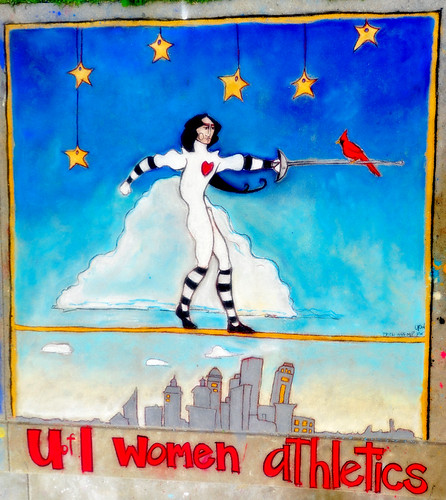
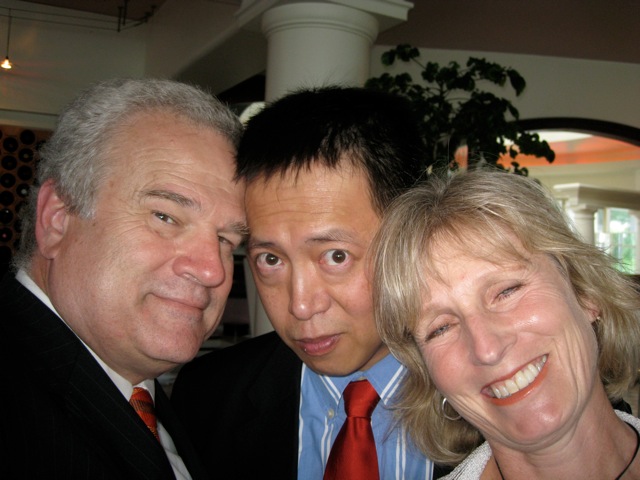
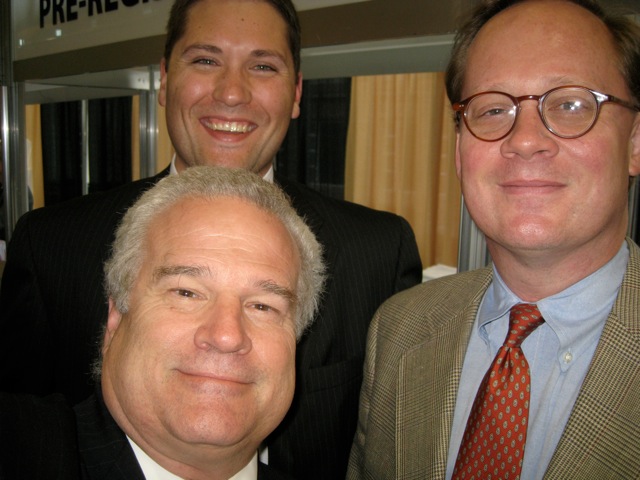




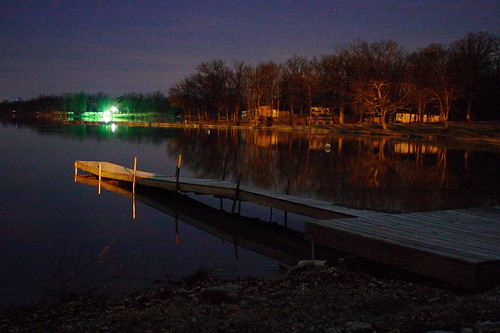
 No less than their sensory counterparts, the waves of personal remembrance obey
No less than their sensory counterparts, the waves of personal remembrance obey 


 Like metaphorical truth, visible light rarely reveals its constituent parts so regularly and so predictably. Depart ever so modestly from the axis on which truth or light turns, and your eyes will no longer honor one focus. And if you should look instead at an object propelled through the sky, gravity's rainbow will no longer appear to you in closed form. It will rise — and fall — according to a trajectory that will never connect the beginning of truth with its end.
Like metaphorical truth, visible light rarely reveals its constituent parts so regularly and so predictably. Depart ever so modestly from the axis on which truth or light turns, and your eyes will no longer honor one focus. And if you should look instead at an object propelled through the sky, gravity's rainbow will no longer appear to you in closed form. It will rise — and fall — according to a trajectory that will never connect the beginning of truth with its end..jpg) Pivotal events therefore mark the sections of our lives, slicing at particular points of time through the whole of the truth and leaving us no more enlightened than the objects we trace across our field of vision at speeds well below that of light. Catch them, and you will be rewarded momentarily by the mirage of control. Miss them altogether, and you will rue forever the path that both of you, protagonist and projectile, must follow.
Pivotal events therefore mark the sections of our lives, slicing at particular points of time through the whole of the truth and leaving us no more enlightened than the objects we trace across our field of vision at speeds well below that of light. Catch them, and you will be rewarded momentarily by the mirage of control. Miss them altogether, and you will rue forever the path that both of you, protagonist and projectile, must follow.

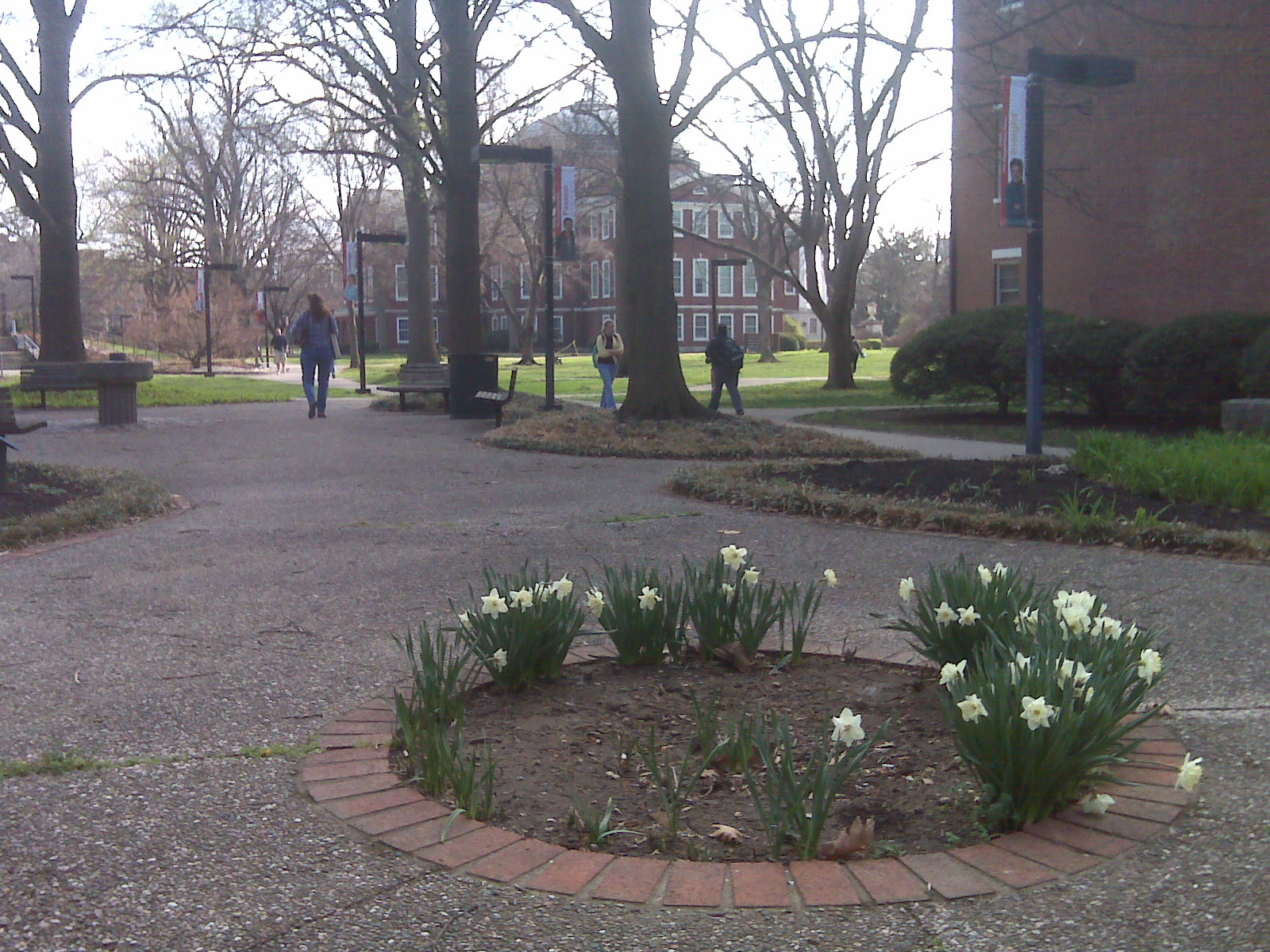

editcopy.jpg)










.png)







